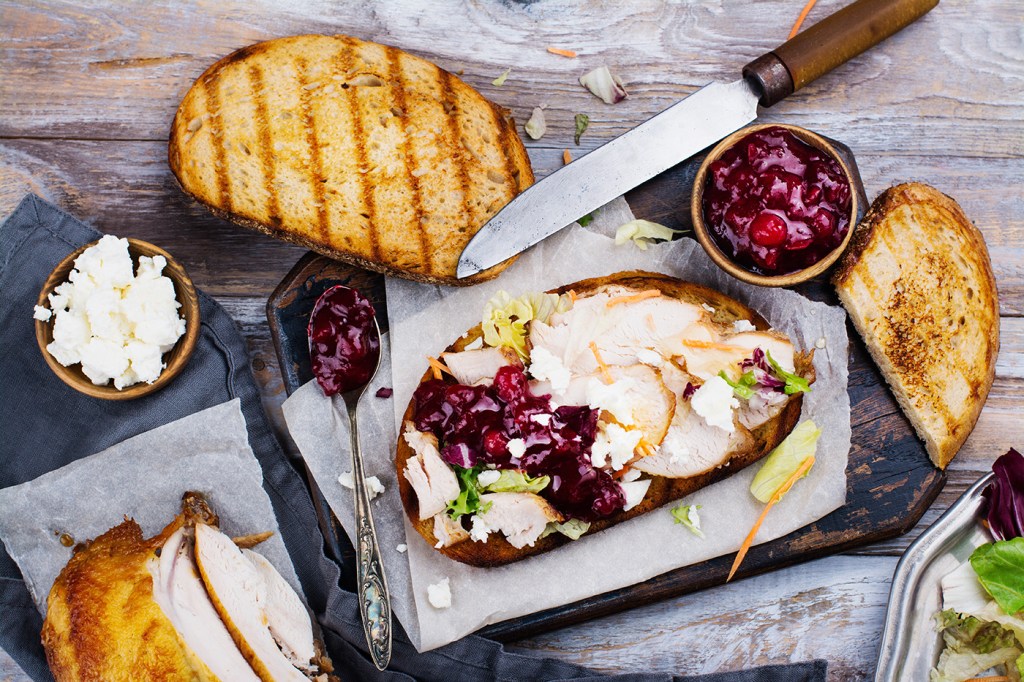Here’s how to store your leftovers for a merry–not scary–holiday season

How long is it safe to eat leftover latkes? What’s the safest way to serve a Christmas ham? If holiday food is occupying space in your brain (and your refrigerator), Darin Detwiler, a food policy and technology expert at Northeastern, has advice to help you avoid getting sick amid the merriment.
“The basic principle—and I realize it sounds simple—is that you have to keep hot food hot, and cold food cold,” says Detwiler, who is the assistant dean of academic and faculty affairs in Northeastern’s College of Professional Studies, and has 30 years’ experience shaping federal food policy and advocating for better food safety protocols.

Darin Detwiler is the assistant dean of academic and faculty affairs in Northeastern’s College of Professional Studies, and has 30 years’ experience shaping federal food policy and advocating for better food safety protocol. Portrait courtesy of Darin Detwiler
By “hot,” he means cooked food should be served at 140 degrees Fahrenheit or higher, and for “cold” foods, refrigerated at 40 degrees Fahrenheit or lower. At either end of the spectrum, food should be out on the table or a serving station for no more than two hours, Detwiler says. Keeping food at these temperatures guards against it entering into the “danger zone,” or the temperatures at which bacteria replicate most. If you’re planning a longer dinner, rotate food between the oven and the refrigerator so it stays within safe temperatures, Detwiler suggests.
Then, there’s storage: Leftovers need to be stored in small, shallow containers, and they have to be eaten or frozen within four days, Detwiler says. Frozen food is generally safe for up to six months, if it stays frozen. And before eating leftover food, be sure to reheat it to 165 degrees Fahrenheit or higher, unless it’s something that is supposed to be enjoyed cold.
Using shallow containers ensures that the leftover food will cool all the way through—a large pot of chili stuck in the refrigerator after cooking may never get cold enough in the center to suppress bacteria growth, for example. Using small containers means that next-day chefs can enjoy their food without dipping in and out of the same large bowls, a kind of “Russian roulette” when it comes to foodborne illnesses, Detwiler says.
These kinds of considerations are essential for creating a merry, not scary, holiday event. The U.S. Centers for Disease Control and Prevention estimate that 48 million people get sick each year from foodborne illnesses, and some are quite severe—128,000 people are hospitalized, and 3,000 die from foodborne pathogens.
And, Detwiler says, after two years during which the COVID-19 pandemic has exposed the varying degrees to which vulnerable populations can be impacted by a common health threat, food safety is more important than ever.
“We have to think about these vulnerable populations more than we have before,” he says. “The last thing we want to do is make this the last holiday for those we hold most dearly. To me, food safety is one of the more foundational ways we show people we care about them.”
Another way to show you care? Plan meals that minimize wasted food, Detwiler says. After all, one person can only eat so many holiday leftovers, and there’s a limited window in which to enjoy them safely, anyway. As a host, you can encourage guests to bring storage containers and send everyone home with leftovers. Or, you could plan smaller meals that generate fewer leftovers in the first place.
In either case, Detwiler suggests thinking strategically about the leftovers you do have. Next-day mashed potatoes can become easy potato pancakes with a little flour and egg. Leftover turkey can be turned into turkey chili or bone broth.
Even as holiday meal-planning takes top of mind, these strategies go beyond the holidays; food safety is important year-round.
“We always need to be concerned with safety,” Detwiler says. “I don’t care how old you are, you still look both ways before you cross the street. This is the same idea.”
For media inquiries, please contact Shannon Nargi at s.nargi@northeastern.edu or 617-373-5718.




